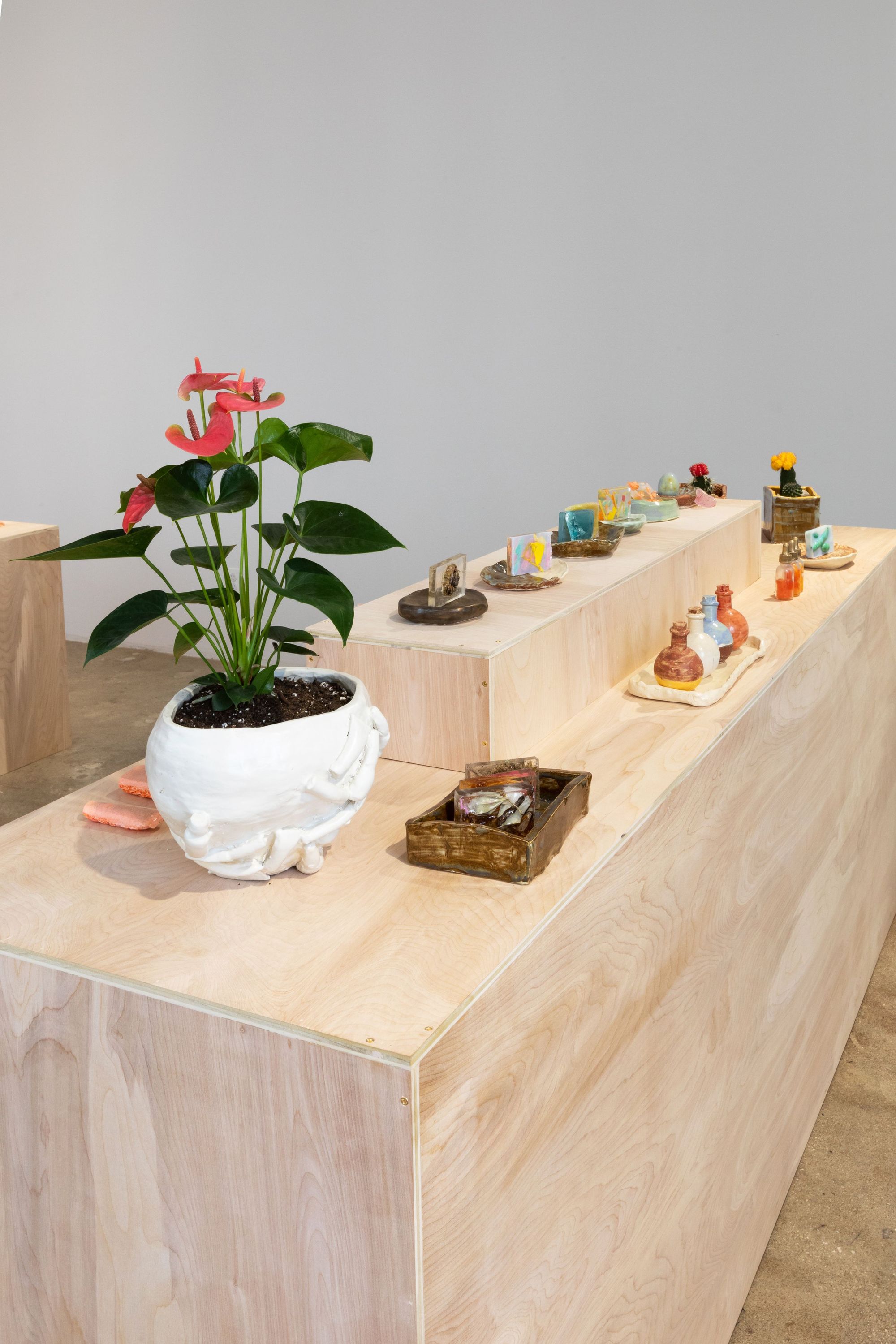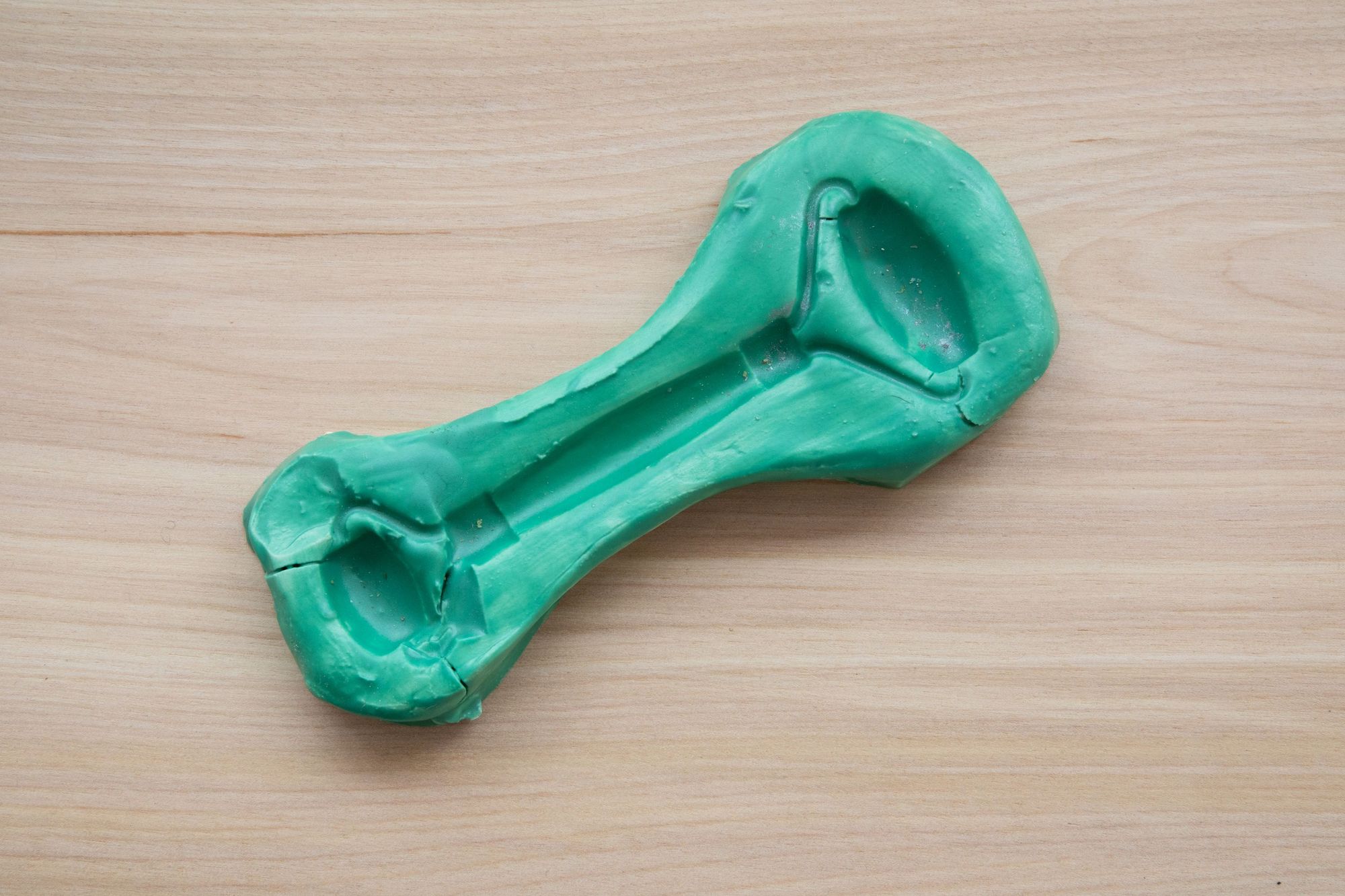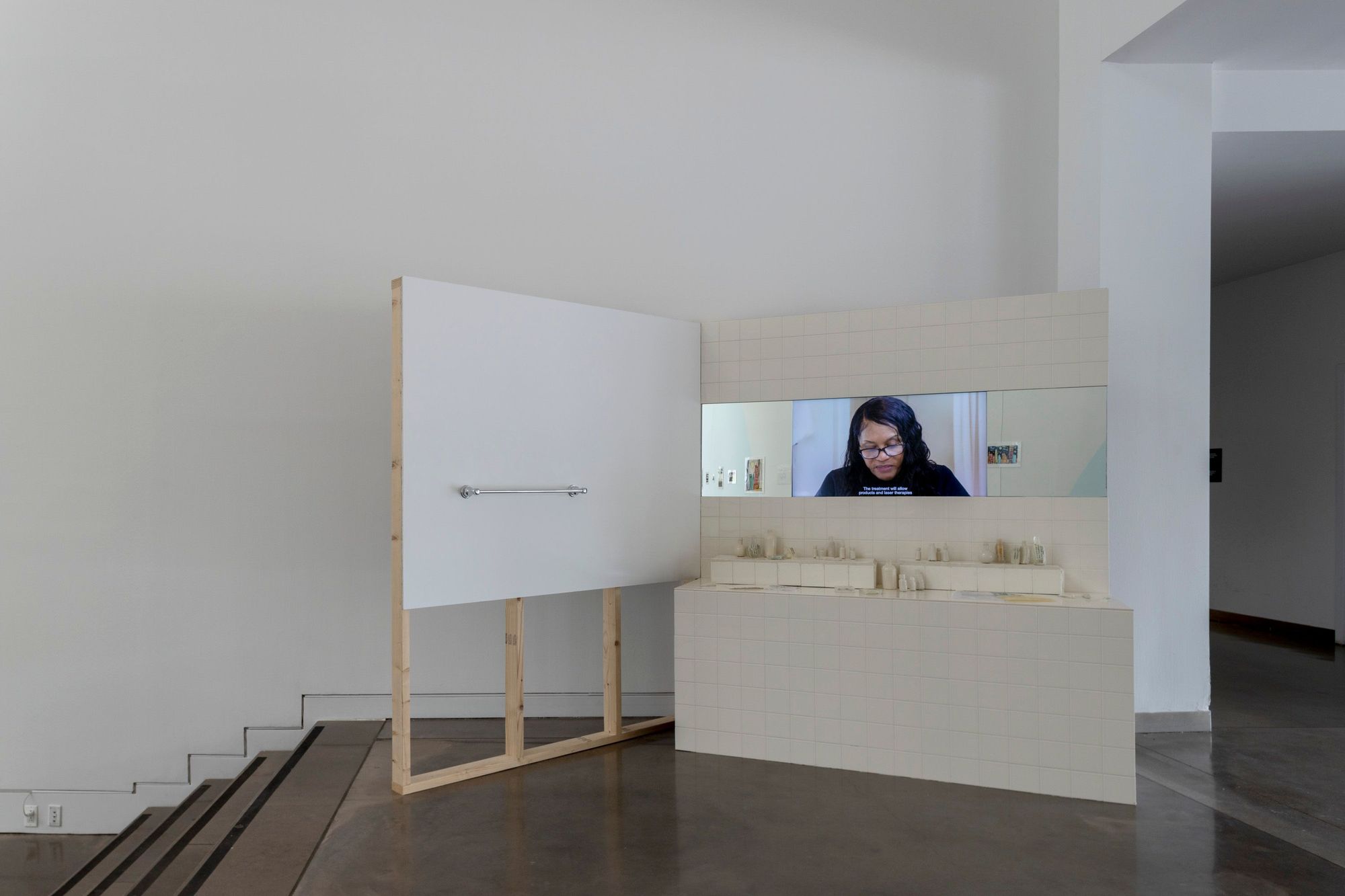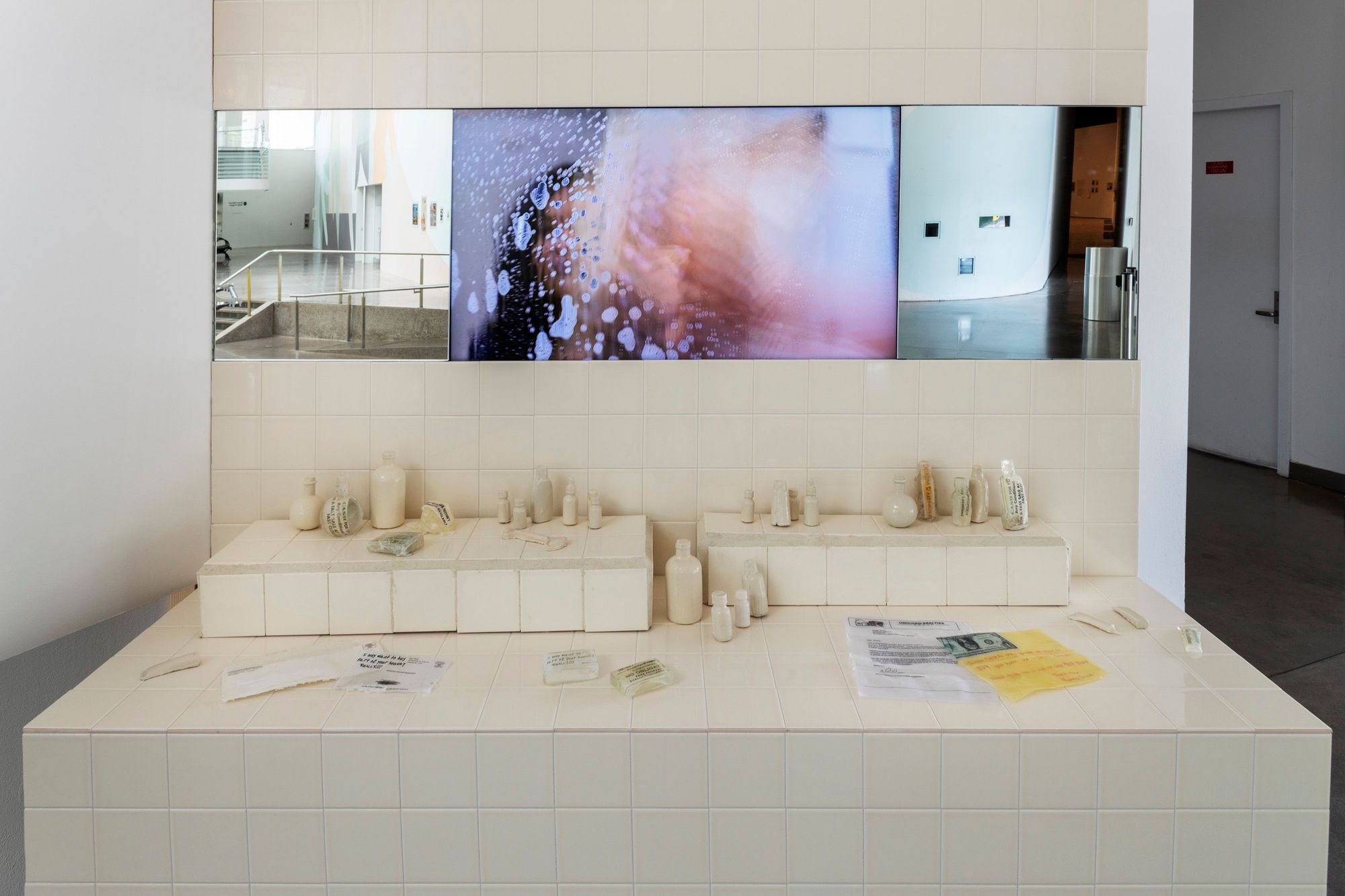You Are What You Eat: Ilana Harris-Babou
Ilana Harris-Babou’s videos typically lampoon aspirational lifestyle trends associated with privileged consumer demographics, adopting the forms of instructional how-tos or brand promos—complete with soundtracks of generically upbeat music—on subjects like basement renovations, the “erotics” of cooking, and fictional product lines that betray histories of racial oppression. The home-furnishing store Restoration Hardware figured in two videos she contributed to last year’s Whitney Biennial. One of them, Human Design (2019), was inspired by an experience she had involving African wood carvings displayed at the company’s Manhattan flagship. Speaking with Document magazine, the artist mentioned that when she inquired about the carvings’ source, a sales associate replied, “We send team members out across the globe to find these one-of-a-kind objects,” and explained that they weren’t for sale. In other words, they were exotic curios from Africa used to enliven an otherwise staid retail space catering to upscale, largely white tastes. Pushing the situation to its humorous breaking point, Harris-Babou cast herself as CEO of a fictional interior design company who travels to Senegal to find her aesthetic roots for the benefit of her high-end clientele.
For “Decision Fatigue,” her recent exhibition at Hesse Flatow, Harris-Babou turned her attention to the wellness industry. In the titular video (all works 2020), her mother, Sheila Harris, plays a self-help guru who touts things like Cheetos face masks, rose quartz facial rollers, and soaps containing junk food like chocolate chips. Sharing her “daily beauty routine” for activities like “not breastfeeding” and “eating a TV dinner,” she offers such illogical steps as washing down a dose of multivitamins with Pepsi and—for the aforementioned, stomach-churning mask—grinding Cheetos with a mortar and pestle into crumbs that can be spread (inefficiently) over the skin. Her processes take the dictum “You are what you eat” to the hysterical extreme by combining beauty products with the foodstuffs that make up many Americans’ diets.
Of course, as with all of Harris-Babou’s work, there is a biting critique in this presentation, which highlights the absurdity of health and beauty standards that many people don’t have the resources or time to maintain.1



As Harris-Babou notes, “I use the aspirational tropes of popular culture as a Trojan Horse to get into the viewer’s line of sight. Once seen, the work distorts and distends the abject failures of material desire. I reference these genres in order to confront the expectations of the American Dream; to face the ever-unreliable notion that hard work will lead to upward mobility and economic freedom. My work is funny. I see humor as a means to digest painful realities.” ♦


Ilana Harris Babou is currently a fall 2020 Pioneer Works visual arts resident and is featured in the group exhibition “After the Plaster Foundation, or, ‘Where can we live?’” at the Queens Museum, currently on view until January 17, 2021.
Initiated in 2012, the Pioneer Works visual arts, technology, music, and narrative arts residency programs provide free space and access to a variety of resources with the belief that by working together under one roof, each program’s energies and ideas can be shared.
Ilana Harris-Babou (b. 1991 Brooklyn, NY) earned a BA from Yale University and a MFA from Columbia University School of the Arts. She has exhibited in venues such as the Museum of Art and Design, New York, USA; The Whitney Museum of Art, New York, USA; The Studio Museum, New York, USA; Sculpture Center, Queens, USA; de Young Museum, San Francisco, USA; Jewish Museum, New York, USA; Kunsthaus Hamburg, Hamburg, Germany; Laundry Arts, London, UK; Zuckerman Museum of Art, Kennesaw, USA; Abrons Art Center, New York, USA; among others. Ilana Harris-Babou has participated in residencies at PICA (2019), Lighthouse Works (2019), the Whitney Museum of Art (2019), Recess Art (2018), BRIC (2016), and School of Making Thinking (2014).
Footnote:
1 This is an extended excerpt of David Everitt Howe, "Cheeto Face Masks and Chocolate Chip Soap: Ilana Harris-Babou's New Work Parodies Beauty and Wellness Culture," Art in America, April 21, 2020, https://www.artnews.com/art-in-america/aia-reviews/ilana-harris-babou-decision-fatigue-hesse-flatow-1202684478/.
Subscribe to Broadcast